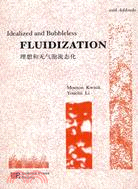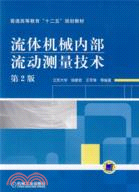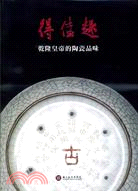理想和無氣泡流態化(簡體書)
商品資訊
ISBN13:9787030224422
出版社:科學出版社
作者:MOOSON KWAUK
出版日:2009/01/01
裝訂/頁數:精裝/353頁
規格:26cm*18.8cm*2.8cm (高/寬/厚)
商品簡介
作者簡介
目次
商品簡介
When fluidization was first employed industrially,e.g., in the Winkler gasifier, we had only the bubblingfluidized bed as shown in the middle diagram of thefigure, in which gas bypasses as bubbles, thus leadingto poor solid-gas contact and incurring large pressuredrop. What is ideal is the high dispersion of solidsshown asthe background of the book jacket. Short ofsuch an ideal state, we may resort to suppressing bubblesby the use of shallow fluidized bed as shown on thelefthand side diagram achieved through reducing thesolid content of the fluidized bed. or the fast fluidizedbed with continuous recycfing of solids to the bottomof the bed, as shown on the righthand side diagram. Allthese diagrams of fluidization were generated throughcomputer modeling by Professor Wei Ge, and fromhosts of these diagrams, four were selected by Xue Bai,Jianxing Lu and Ying Ren to portray the principal thesisof this book.
作者簡介
Mooson Kwauk graduated from University of Shanghai in1 943 and researched in fluidization under the late ProfessorRichard Wilhelm at Princeton University from 1 945 to1947.He has continued working in this field both in theUnited States and in China,and iS now Professor andDirector Emeritus of the Institute of Process Engineering ofthe Chinese Academy of Sciences,to which he was electedMember in 1980.In 1989 he received an InternationalFluidization Award of Achievement at the Sixth International Fluidization Conference held in Banff,Canada.
The author postulates an idealized system of completehomogeneity that can be used in the analysis of many engineering problems,e.g.,
·generalized fluidization with both solids and fluid in flow
·fluidized leaching and washing
·solids mixing and segregation
·operation of conical fluidized beds
These problems arise in hydraulic classification according to particle size anddensity,sedimentation and classification,continuous ion exchange or adsorption,watertreatment,fluid-bed electrolysis,and biochemical processes involving granular particlesand supercritical extraction of solid materials.Professor Kwauk also expoundsalternative bubbleless gassolid contacting systems,e.g.,dilute raining particles,fastfluidization,shallow fluidized beds,and particles fluidized under the influence ofoscillating flowsome of these techniques are already replacing their bubblingpredecessors.He proposes further a method for assessing the fluidizing performance ofpowders with a view to improving their gas-solid contacting behavior in the direction ofthe idealized state through particle design.
Youchu Li graduated from Tianjin University in 1962 andwas appointed to the Institute of Chemical Metallurgy(nowProcess Engineering)of the Chinese Academy of Sciences.He is now a retired professor.As a researcher and directorof the Fluidization Laboratory,he developed correlations forthe dynamics of fast fluidization,multilayer fluidized bed,gas—solid mixing,mass and heat transfer in fluidization,andhe developed processes for magnetizing roasting of low-grade and complex iron ores,calcination of non-metallicores,clean coal combustion and pyrolysis and preparation ofvarious powdered functional materials.
Professor Li received several awards from the State and the Chinese Academv ofSciences,and he summarized in 2008 his more than 40 years’R&D in fluidization in amonograph,“Introduction to Fluidization Process Engineering”(in Chinese).In thepresent publication,he contributed two addenda:one on recent studies on gas-solid flowand applications of fast fluidization and the other on the more recent area of magnetoflu—idization,both involving not a few of his own innovations.
The author postulates an idealized system of completehomogeneity that can be used in the analysis of many engineering problems,e.g.,
·generalized fluidization with both solids and fluid in flow
·fluidized leaching and washing
·solids mixing and segregation
·operation of conical fluidized beds
These problems arise in hydraulic classification according to particle size anddensity,sedimentation and classification,continuous ion exchange or adsorption,watertreatment,fluid-bed electrolysis,and biochemical processes involving granular particlesand supercritical extraction of solid materials.Professor Kwauk also expoundsalternative bubbleless gassolid contacting systems,e.g.,dilute raining particles,fastfluidization,shallow fluidized beds,and particles fluidized under the influence ofoscillating flowsome of these techniques are already replacing their bubblingpredecessors.He proposes further a method for assessing the fluidizing performance ofpowders with a view to improving their gas-solid contacting behavior in the direction ofthe idealized state through particle design.
Youchu Li graduated from Tianjin University in 1962 andwas appointed to the Institute of Chemical Metallurgy(nowProcess Engineering)of the Chinese Academy of Sciences.He is now a retired professor.As a researcher and directorof the Fluidization Laboratory,he developed correlations forthe dynamics of fast fluidization,multilayer fluidized bed,gas—solid mixing,mass and heat transfer in fluidization,andhe developed processes for magnetizing roasting of low-grade and complex iron ores,calcination of non-metallicores,clean coal combustion and pyrolysis and preparation ofvarious powdered functional materials.
Professor Li received several awards from the State and the Chinese Academv ofSciences,and he summarized in 2008 his more than 40 years’R&D in fluidization in amonograph,“Introduction to Fluidization Process Engineering”(in Chinese).In thepresent publication,he contributed two addenda:one on recent studies on gas-solid flowand applications of fast fluidization and the other on the more recent area of magnetoflu—idization,both involving not a few of his own innovations.
目次
Chapter 1 THE FLUIDIZED STATE
1.1 The Fluidized State and How It Is Achieved
1.2 Nature of Hydrodynamic Suspension
1.3 Particle-Particle Forces
1.4 Species of Fluidization
1.5 Regimization of the Fluidized State
Chapter 2 IDEALIZATION OF THE FLUIDIZING PROCESS:Empirical Deductions from L/S Systems
Chapter 3 GENERALIZED FLUIDIZATION
3.1 Steady-State Motion
3.2 Moving Bed
3.3 Accelerative Motion
3.4 Polydisperse Systems
3.5 Computer Software
Chapter 4 FLUIDIZED LEACHING AND WASHING
4.1 Characteristics
4.2 Uniform Particles
4.3 Mixed Particles
4.4 Experimental Findings
4.5 Staging
4.6 Rate Measurement for Solids Leaching and Washing
Chapter 5 SOLIDS MIXING AND SEGREGATION
5.1 Phase Juxtaposition
5.2 Operation Shifts
5.3 Reversal Points
5.4 Degree of Segregation
5.5 Mixing-Segregation Equilibrium
5.6 Generalized Fluidization of Polydisperse Systems
Chapter 6 CONICAL FLUIDIZED BEDS
6.1 Phenomenological Description and Physical Modeling
6.2 The Basic Parameters
6.3 The Fully Fluidized State
6.4 With Hyperfluidized Fixed Bed
6.5 Ranges for Conical Fluidized Bed Operation
6.6 Charting Conical Fluidized Bed Operation and Experimenta Verification
6.7 Instability
Chapter 7 APPLICATION OF THE MOVING BED
7.1 Moving Bed Uptransport with Compressible Media
7.2 The Pneumatically Controlled Downcomer
Chapter 8 BUBBLELESS GAS/SOLID CONTACTING
8.1 Bubbling Fluidization and G/S Contacting Efficiency
8.2 Species of Bubbleless G/S Contacting
Chapter 9 SYSTEMS WITH DILUTE RAINING PARTICLES
9.1 Raining-Particles Heat Exchanger
9.2 Polydisperse Particles
9.3 Experimental Verification
9.4 Baffling and Particles Distribution
9.5 Countercurrent Staging of Cocurrent Systems
9.6 Pilot Plant Demonstration
Chapter 10 VOIDAGE DISTRIBUTION IN FAST FLUIDIZATION
10.1 Modeling Longitudinal Voidage Distribution
10.2 Evaluation of Parameters
10.3 Computing Voidage Distribution
10.4 Regime Diagram
10.5 Generalized Fluidization of Nonideal Systems
10.6 Radial Voidage Distribution
Chapter 11 SHALLOW FLUIDIZED BED
11.1 Relevant Work on Distributor
11.2 Fluid Flow above Distributor
1 1.3 Particle Behavior above Distributor
11.4 Assessment of Distributor Performance
11.5 Particle-Gas Transfer in Shallow Fluid Bed
11.6 Activated Solids Shallow Fluid Bed Heat Exchanger
11.7 Cocurrent Multi-Stage Shallow Fluid Bed
11.8 The co-MSFB as a Chemical Reactor
Chapter 12 FLUIDIZATION WITH NO NET FLUID FLOW
12.1 Levitation of Discrete Particles
12.2 Semi-Fluidization through Oscillatory Flow
12.3 Application to Pseudo Solid-Solid Reaction
Chapter 13 A COHERENT ANALYSIS FOR L/S AND G/S SYSTEMS .-
13.1 From Phenomena through Hypothesis to Modeling
……
Chapter 14 POWDER ASSESSMENT
Chapter 15 FUTURE PROSPECTS
NOTATIONS
References
SUBJECT INDEX
ADDENDA
Chapter 16 FAST FLUIDIZATION AND ITS APPLICATIONS
Chapter 17 MAGNETOFLUIDZATION
1.1 The Fluidized State and How It Is Achieved
1.2 Nature of Hydrodynamic Suspension
1.3 Particle-Particle Forces
1.4 Species of Fluidization
1.5 Regimization of the Fluidized State
Chapter 2 IDEALIZATION OF THE FLUIDIZING PROCESS:Empirical Deductions from L/S Systems
Chapter 3 GENERALIZED FLUIDIZATION
3.1 Steady-State Motion
3.2 Moving Bed
3.3 Accelerative Motion
3.4 Polydisperse Systems
3.5 Computer Software
Chapter 4 FLUIDIZED LEACHING AND WASHING
4.1 Characteristics
4.2 Uniform Particles
4.3 Mixed Particles
4.4 Experimental Findings
4.5 Staging
4.6 Rate Measurement for Solids Leaching and Washing
Chapter 5 SOLIDS MIXING AND SEGREGATION
5.1 Phase Juxtaposition
5.2 Operation Shifts
5.3 Reversal Points
5.4 Degree of Segregation
5.5 Mixing-Segregation Equilibrium
5.6 Generalized Fluidization of Polydisperse Systems
Chapter 6 CONICAL FLUIDIZED BEDS
6.1 Phenomenological Description and Physical Modeling
6.2 The Basic Parameters
6.3 The Fully Fluidized State
6.4 With Hyperfluidized Fixed Bed
6.5 Ranges for Conical Fluidized Bed Operation
6.6 Charting Conical Fluidized Bed Operation and Experimenta Verification
6.7 Instability
Chapter 7 APPLICATION OF THE MOVING BED
7.1 Moving Bed Uptransport with Compressible Media
7.2 The Pneumatically Controlled Downcomer
Chapter 8 BUBBLELESS GAS/SOLID CONTACTING
8.1 Bubbling Fluidization and G/S Contacting Efficiency
8.2 Species of Bubbleless G/S Contacting
Chapter 9 SYSTEMS WITH DILUTE RAINING PARTICLES
9.1 Raining-Particles Heat Exchanger
9.2 Polydisperse Particles
9.3 Experimental Verification
9.4 Baffling and Particles Distribution
9.5 Countercurrent Staging of Cocurrent Systems
9.6 Pilot Plant Demonstration
Chapter 10 VOIDAGE DISTRIBUTION IN FAST FLUIDIZATION
10.1 Modeling Longitudinal Voidage Distribution
10.2 Evaluation of Parameters
10.3 Computing Voidage Distribution
10.4 Regime Diagram
10.5 Generalized Fluidization of Nonideal Systems
10.6 Radial Voidage Distribution
Chapter 11 SHALLOW FLUIDIZED BED
11.1 Relevant Work on Distributor
11.2 Fluid Flow above Distributor
1 1.3 Particle Behavior above Distributor
11.4 Assessment of Distributor Performance
11.5 Particle-Gas Transfer in Shallow Fluid Bed
11.6 Activated Solids Shallow Fluid Bed Heat Exchanger
11.7 Cocurrent Multi-Stage Shallow Fluid Bed
11.8 The co-MSFB as a Chemical Reactor
Chapter 12 FLUIDIZATION WITH NO NET FLUID FLOW
12.1 Levitation of Discrete Particles
12.2 Semi-Fluidization through Oscillatory Flow
12.3 Application to Pseudo Solid-Solid Reaction
Chapter 13 A COHERENT ANALYSIS FOR L/S AND G/S SYSTEMS .-
13.1 From Phenomena through Hypothesis to Modeling
……
Chapter 14 POWDER ASSESSMENT
Chapter 15 FUTURE PROSPECTS
NOTATIONS
References
SUBJECT INDEX
ADDENDA
Chapter 16 FAST FLUIDIZATION AND ITS APPLICATIONS
Chapter 17 MAGNETOFLUIDZATION
主題書展
更多
主題書展
更多書展今日66折
您曾經瀏覽過的商品
購物須知
大陸出版品因裝訂品質及貨運條件與台灣出版品落差甚大,除封面破損、內頁脫落等較嚴重的狀態,其餘商品將正常出貨。
特別提醒:部分書籍附贈之內容(如音頻mp3或影片dvd等)已無實體光碟提供,需以QR CODE 連結至當地網站註冊“並通過驗證程序”,方可下載使用。
無現貨庫存之簡體書,將向海外調貨:
海外有庫存之書籍,等候約45個工作天;
海外無庫存之書籍,平均作業時間約60個工作天,然不保證確定可調到貨,尚請見諒。
為了保護您的權益,「三民網路書店」提供會員七日商品鑑賞期(收到商品為起始日)。
若要辦理退貨,請在商品鑑賞期內寄回,且商品必須是全新狀態與完整包裝(商品、附件、發票、隨貨贈品等)否則恕不接受退貨。





























